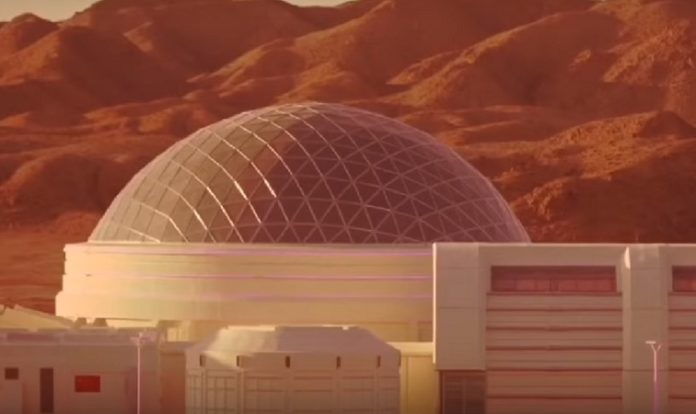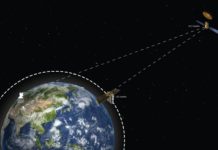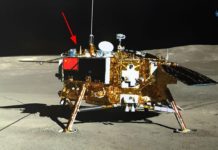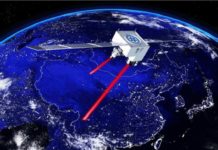This October, the Chinese Academy of Sciences opened the doors to its very own Mars analogue simulator in the Gobi Desert.
The Chinese Mars environment simulator was announced last month along with the hilariously B-movie sounding “Space Plan C”, a space outreach project aimed at teenagers.
The base is located in the Gobi Desert, just outside the city of Jinchang, northwest China’s Gansu Province.
According to the Chinese Academy of Sciences, “the unique landform and red rocks make the area a perfect place for tourists to experience the Red Planet on earth.”
Do take a moment to subscribe to our email newsletter here. We will not sell your email address to a third party, and you can unsubscribe anytime.
“It is first and foremost a Mars exploration-themed tourist site,” said Liu Xiaoqun, Director of the General Office of Lunar and Deep Space Exploration of the Chinese Academy of Sciences.
“The base provides teenagers a chance to experience what it’s like to live on Mars and learn how technology leads society forward.”
The analogue base contains nine cabins, including an airlock cabin, general control cabin and biopak, all designed to simulate the visual environment of the Martian landscape. Presumably the Gobi Desert is suitably Mars like. Let’s hope the Gobi Death Worms don’t transform it from Mars to Arakkis.
The video below shows the Chinese analogue in greater detail, and it does look a lot of fun!
While the Chinese analogue appears to be little more than a theme park disguised as an outreach attempt, let’s take a look at some of the more serious attempts at planetary simulation, including other historical Martian analogues that have existed here on Earth.
Flashline Mars Arctic Research Station (FMARS)
FMARS is the first of two Mars Analogue Research Stations established and run by the Mars Society (a non-profit Mars exploration advocacy group headed by Robert Zubrin).
The station is located on Devon Island in the polar region of North Canada. The isolation and unique geological features of the area combined with the harsh polar environment make for a reasonable simulation of Mars, gravitational and atmospheric differences notwithstanding.
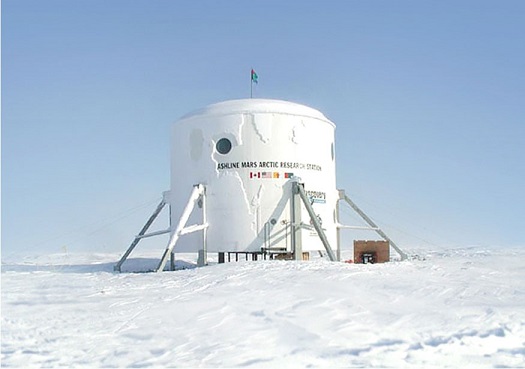
Much of the research conducted at FMARS is focused on the behavioural side of colony life, and has produced papers on surface operations, stress, and human factors which could help make life on the Red Planet more bearable.
You can read more about FMARS over at this link.
Mars Desert Research Station
Next is the Mars Desert Research Station (MDRS) based in Utah, USA. This is the smallest and probably most accessible of our list of analogues, not just in terms of geographical location but in terms of potential for collaboration as well.
The MDRS is also run by the Mars Society, and has played host to 197 research teams (or “crews”) between 2001 and the current date (November 2018). The crews of the MDRS are rotated in and out every couple of weeks, allowing a fresh influx of new researchers and students to experience life as the crew.
The MDRS has its own motor quad bikes for “EVA” and mockup spacesuits for “EVA” exploration, features habitat domes, a greenhouse, and even an observatory with a 28-centimetre Schmidt-Cassegrain telescope provided by Elon Musk and Celestron.
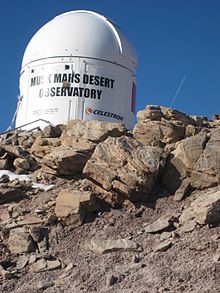
Most of the research conducted at MDRS has been focused on living and working in a simulated Martian environment. One team even devised a new method for detecting methane in the local rocks. This could prove useful in future real-life Martian exploration.
You can read more about MDRS over at this link.
HI-SEAS
HI-SEAS (Hawai’i Space Exploration Analog and Simulation) is a dome habitat on a Mars-like site at Mauna Loa in Hawaii.
It is run by the University of Hawai’i and has been running since 2013, during which time 6 crews have performed their research there.
Aside from having probably one of the best views of all of the Earthly analogues, research here has focused on food, crew dynamics and group communication.
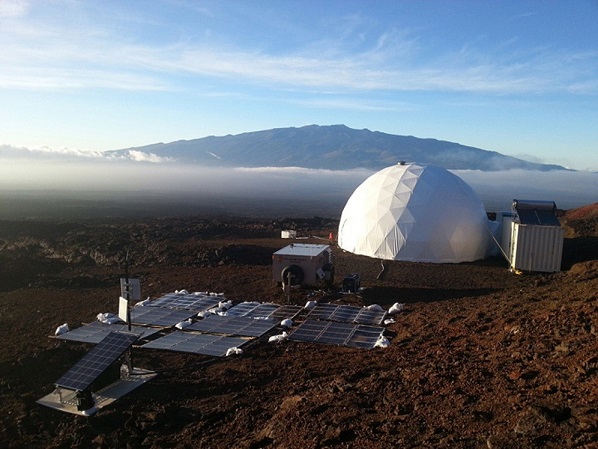
One aspect of communications research at the facility is focused on Earth-Mars communications, and so communications between the base and the camp are conducted with a 20 minute delay, in order to better simulate communications between Mars and Earth in real life.
You can read more about HI-SEAS over here.
Mars500
Mars500 was a study conducted by ESA, Russia and China, at the Russian Institute for Biomedical Problems (IBMP) in Moscow between 2007 and 2011. It was broken down into several phases over several crews, and like most of these analogues was focused on the psychosocial aspects of spaceflight.
Unlike the other mission simulations, which focused on mirroring life on the Martian surface, the Mars500 project emulated various mission stages including Earth-Mars transit, EDL (Entry Descent and Landing) and life on the Red Planet itself.
The first phase of the Mars500 experiment lasted for 15 days and took place in November 2007. This was effectively a shake-down test, designed to check that the facilities and procedures were in place for the real thing.
The second phase lasted for 105 days between March 2009 and July 2009, and was focused on gathering more data, and was seen as another forerunner to the real deal.
The real-deal itself, was the third and final stage of Mars500, and lasted for 520 days. It was designed to simulate the duration of an actual manned mission to Mars.
This stage was conducted by a six-man international crew, and included a simulation of a manned Mars landing, with three simulated Mars-walks.
The experiment ended in 2011 with all crew reporting rude health – a paper published by the Proceedings of the National Academy of Sciences reported that the circadian rhythms of crew members had been affected, and they had experienced unwanted effects such as sleeplessness and antisocial behaviour such as increased desire for isolation.
A total of over 600 experiments were scheduled to be conducted during the duration of the Mars500 project, making it the largest Mars-analogue simulation of its kind.
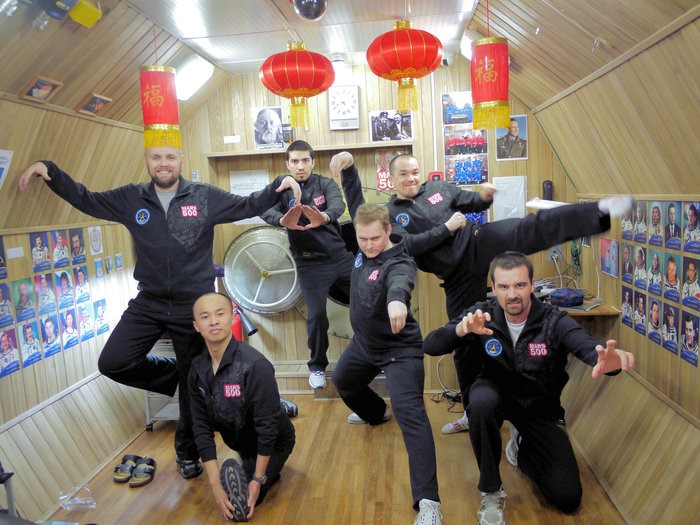
So there you have it- we have some perfectly good examples of extant Mars analogues, which are constantly improving our knowledge about the social and behavioural aspects of life on Mars. Sure, we can only go so far in simulating Mars, given that the atmosphere and gravity environments are so completely different than Earth.
The next step is to combine the psychological and human factors lessons that we have earned on Earth with actual physiological studies performed in space. And for that, we are going to need a Moon base.
So, if you don’t want to wait that long for a space adventure, you can always contact the research analogues at the links provided in the article and volunteer for yourself.

